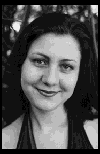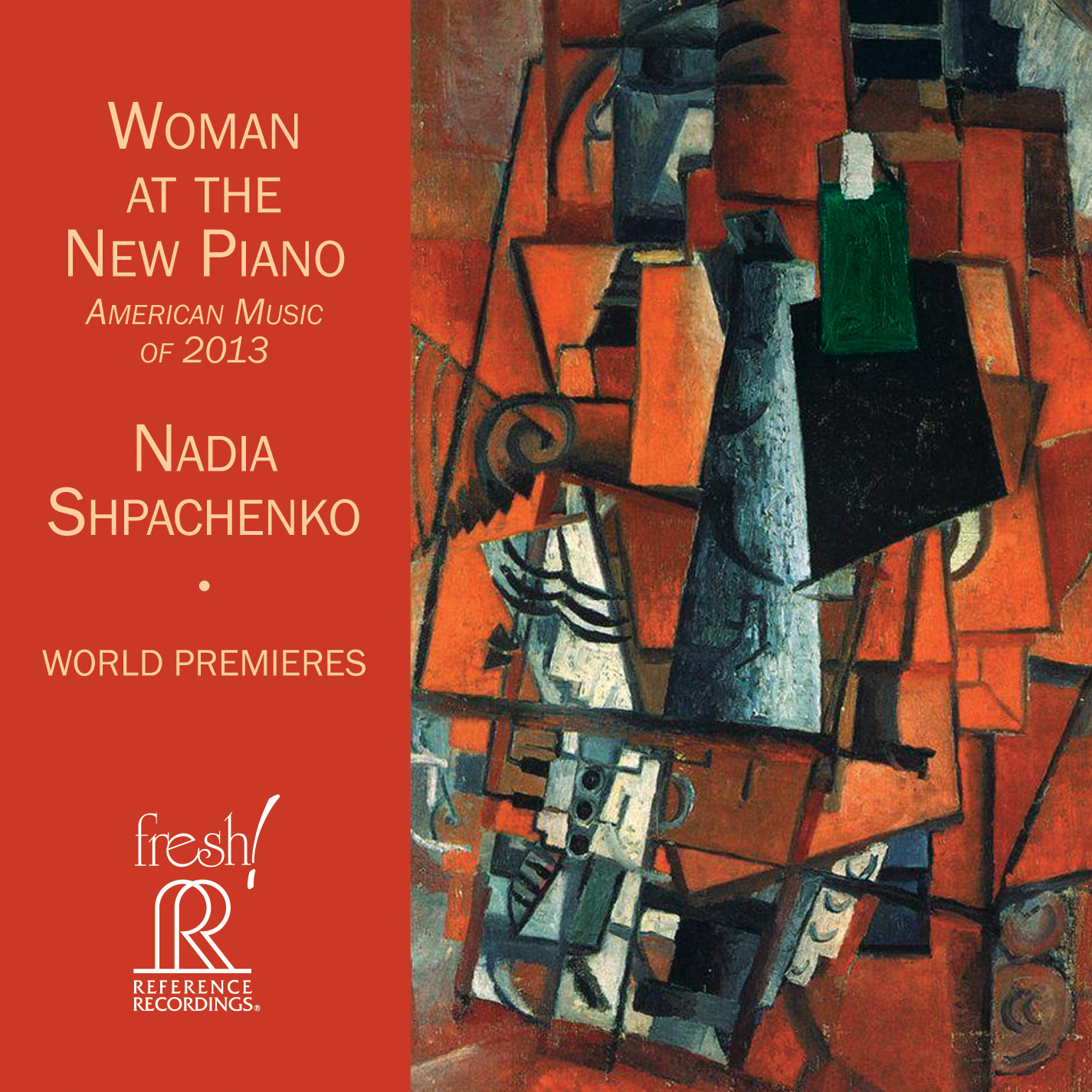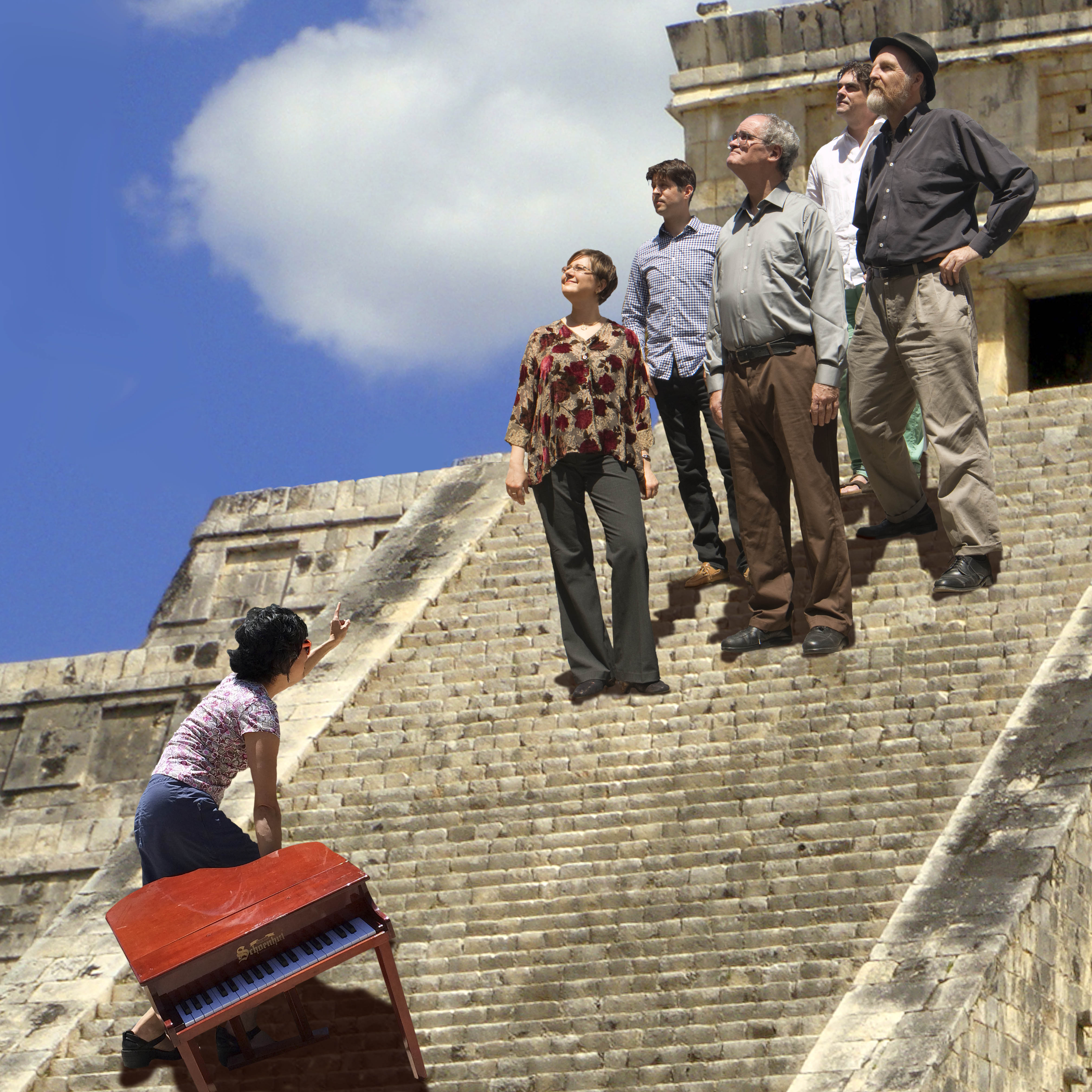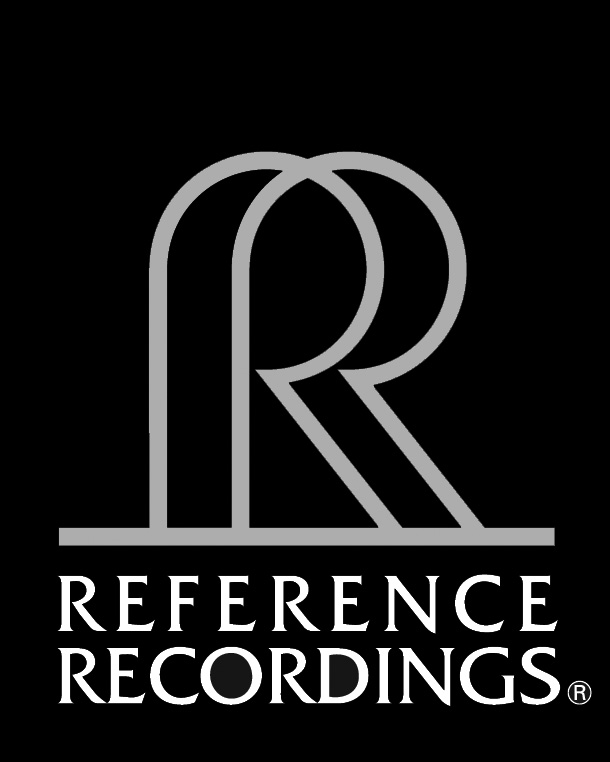|
|
New CD: Woman at the New Piano: American Music of 2013
| Watch the trailer for Woman at the New Piano |
| Track Listing: TOM FLAHERTY 1 Airdancing for Toy Piano, Piano, and Electronics (with Genevieve Feiwen Lee, Toy Piano and Electronics) PETER YATES Finger Songs for Solo Piano; 2 Mood Swing; 3 Gambol; 4 Mysterious Dawn 2; 5 Brave Show; 6 All Better ADAM SCHOENBERG Picture Etudes for Solo Piano: 7 Three Pierrots; 8 Miró's World; 9 Olive Orchard; 10 Kandinsky TOM FLAHERTY Part Suite-a for Solo Piano: 11 Passacaglialude; 12 Lullabande; 13 Scherzoid JAMES MATHESON 14 Cretic Variations for Solo Piano ADAM SCHOENBERG 15 Bounce for Two Pianos (with Genevieve Feiwen Lee, Piano) |
Now available from these and other vendors:
About this recording:
This album has a 20 page booklet that includes detailed program notes by each composer and so much more! Here is Nadia's introduction: In the year 2012 the nation was swept by a fear that had not been seen since the Y2K transition of January, 1, 2000. According to a misinterpretation of the Mayan Long Count calendar, it was believed that the world would end on December 21, 2012 -- the end of the 13th b'ak'tun, 5,125 years since the previous apocalypse. Popular books, movies, and TV shows attempted to deal with the impending disaster. Sure, Mayanist scholars claimed it would really just be a time of celebration. Sure, many said that this was at most a time of transformation, with no basis for apocalyptic predictions. Yet we lived in panic, reading and watching images of the destruction of all we knew. So, waking up after a good night's sleep on December 22, 2012, I first breathed a sigh of relief, then became quite exhilarated. A new b'ak'tun! A newly transformed world! What wonders would it hold for us? As a pianist with a passion for contemporary music, I thought, "Let's celebrate and document this great transition! Let's write and perform new pieces which capture where we are, and where we're going. It's a whole new world, let's play it!" I grabbed my phone and called up the composers who I thought would be most influential to the development of piano music over the course of this new 5,125 year cycle. One by one they awoke, groggily, then realized the day, and said "We're alive! We're transformed! Let's now make the music of this new b'ak'tun!" So I said to each, "Can you have something for me to premiere in 2013? The first program of music all written in this new world, and not the old?" And, meeting upon the great pyramid at Chichen Itza, under the rays of the new sun, we pledged ourselves to this goal. At least, that's how I remember it. This project of 2013 premieres brings together piano repertoire representing the diversity of today's American classical music, in a program both innovative (stylistically, sonically and programmatically) and cohesive. One of the greatest challenges in commissioning new music is the unknown of how the pieces will turn out, and in case of my very time-specific project, whether they will even be finished in time or work well together. The compositions presented here and their programmatic flow exceeded all expectations. Each of these pieces, in the composers' own assessments, rank among their strongest and favorite works, and they complement and contrast each other exquisitely. I feel this program is a remarkable snapshot of compositional activity in the year 2013, a fascinating exposé of how four brilliant people see and experience this newly transformed world, how they express themselves through music, and how their different ideas are brought together by an enthusiastic performer who believes in their legacy. Below you will read the composers' own words about each of their works, but I will note that the pieces all touch on the themes of transformation, of resonances across time, of cycles of rebirth. Cretic Variations and Part-Suite-a emphasize lengthy resonances, how momentary events persist, shape new events, and how our memory of the past is revised by events of the now. In Kandinsky, the extended resonance of the gong seems to parallel the rise and fall of civilizations. Where Picture Etudes take us through a variety of worlds, from placid to frightening, Finger Songs take us on a journey through time, playing on our sentiments with flashes and resonances of musics past. Where Airdancing and Picture Etudes introduce novel combinations of sound sources, Part-Suite-a and Finger Songs feature novel combinations of musical forms and genres. A number of the pieces feature descent into true musical chaos, and emergence into the new - whether momentous, as in the thunder and dawn of Cretic Variations, thrilling, as in whoops and swirls of Airdancing, or exuberant, as in Bounce, which is like a day at the playground running and laughing and spinning until you tumble to the grass and lie there looking at the clouds, then drink a juice box and start again. Though it is still very early in this new b'ak'tun, the journey to the release of this disc has been long and challenging! After coming down from the lofty pledge at Chichen Itza, I worked closely with the composers, discussing the direction the pieces might take, their shape, arc, and meaning, and how to make the music pianistic and idiomatic. With concerts scheduled for the Spring of 2013, it was nerve-wracking to wait for the pieces to be completed. They started to arrive - some by mail, some by email, and Peter's, of course, beautifully hand-written, hand-bound, and hand-delivered. Then I had to learn them! And work out some details with the composers. The interactions were in person, by phone, by email, by every means of communication, often daily. The composers had often conceived of parts that were in their opinion unplayable, and we collaborated to notate them in the most pianistic way, as I welcomed the challenge of proving them wrong. And, hearing pieces for the first time as I learned them, the composers introduced some surprises. Imagine - just as I was beginning to develop the ability to survive the dangerous (or maddening? lethal?) roller coaster ride of performing Kandinsky (in its original, piano-only form), Adam suggested adding a drum for larger impact, and when that resonance was not enough, a gong as well! Was it possible? After a few weeks of research and testing complex pedal assemblies - apparently so. Possible, but humanly possible? Suffice it to say, it remained a pressing question right up until the premiere of the piece in March, 2013. As music gathered and the overall flow of the program took shape, it seemed that it would be perfect to include two duets: Airdancing and Bounce. I called Genevieve Feiwen Lee, and asked her to meet me quickly in Chichen Itza. I had known and collaborated with Genevieve for many years, and had great respect for her own efforts to help reinvent piano music even in the old b'ak'tun. I could think of no one better suited to help us in defining the next fifty centuries of music. And so began the schedule juggling! Two pianists, four composers, halls and instruments! And that was just for rehearsals and live concerts. After all the pieces (except Bounce) were premiered that Spring, we began to schedule the recording sessions. Two pianists, four composers, two producers, piano technicians, the recording crew, the hall… and the major construction project right outside the hall! In the end, we were finally able to pin down a time, and a plan - to record primarily at night, after construction working hours, and check with the crew each day to see if their schedule (determined on a day-by-day basis) might allow us to sneak in a few more hours. It was beautiful -- with the hall nearly pitch dark (we used only two stand lights in order to avoid the buzzing of the hall lights), our excursion into the very newest music seemed lit by Bach's candles. Outside of the wild and loud antics of a nearby credit union convention, and producer Victor Ledin getting caught up in a wedding brawl during the two hours he had for potential sleep, everything went almost smoothly. Really. You believe it? The result is inspiring, humbling, and triumphant, overcoming many obstacles and challenges - many of these pieces are among the most technically and musically demanding works I have had the privilege of bringing to life. Sweat and bloody fingers (and tired feet!) that accompanied my work on Kandinsky… transportation into the colorful, romantic, and scenic world of Olive Orchard or the innocent, joyful groove of Bounce… complete immersion into the poignant, poetic and thunderous world of Cretic Variations… the vividly alluring, shifting, puzzling and exciting imagery of Airdancing, and the intricate, mosaic, lulling and humorously tumultuous Part Suite-a… the intimate acquaintance with the ever so fleeting and spontaneously changing melodies of Finger Songs! A new era, a new world, a new piano! A new me? In thinking about the presentation of this recording, we came across the painting "Woman at the Piano" by Kazimir Malevich. It was created in 1913, exactly 100 years before this recording, by an immigrant to pre-Soviet Ukraine. What was this woman playing, at that earlier time of artistic innovation, and what has changed between she and I, an emigrant from post-Soviet Ukraine? She sits at her piano, both transformed by Malevich's cubo-futurist style. To what might I and my piano be transformed by the music of this new b'ak'tun? This is the question the composers and I have sought to answer, and indeed after this challenging and innovative program, neither I nor the piano will be the same. |




